KRAKOW
- Annalise Lecher

- May 28, 2019
- 14 min read
DAY 1
Although I always make great memories on our class trips, this class trip left my heart very heavy because of the historical sites that we visited. We had a great bus ride together to Krakow which is about 3 hours away from Olomouc. We checked into our hostel, where we stayed in little attic rooms with funny windows and layout! We all said that it kinds reminded us of the Anne Frank house in Amsterdam. Sara, Lauren, Kirsten, Alex, Cici, and I went to this little burger shop across the street where I had a Hawaiian burger that was THEBOMB.COM. We had to quickly scarf them down in order to make it back to walk to the old jewish quarters to visit Schindler's Factory.

The former Oskar Schindler's enamel factory now houses a permanent exhibition called “Kraków under Nazi Occupation (1939-1945). It showcases both individual and collective dimensions of the monstrosities the war brought upon Polish citizens. The exhibition tells the gripping story of Krakow during the war and the inhabitants who were affected by Nazi propaganda, the Jews who were forced to relocate and live in the Ghettos and the victims of the terror of the war. The exhibit is wonderfully executed as each room is meticulously arranged to resemble a very specific place- a street, a salon, a train station, a labor camp and many more as there are 45 rooms in total. I loved it because it appealed to all senses which evoked much more serious emotions. The modern touches throughout the museum helped to maintain the attention of visitors.
If you have seen the movie Schindler's list then you are familiar with the story, however, if not let me give a brief explanation. Oskar Schindler (1908-1974) was a German entrepreneur and a member of the Nazi party. He is credited with saving approximately 1200 Jews by employing them in his factories. He employed them so that they could avoid horrible living conditions and eventually death in the Nazi labor camps. He was one of many people who tried to do what they cold to save people from Nazi terror. He said, “I hated the brutality, the sadism, and the insanity of Nazism. I just couldn't stand by and see people destroyed. I did what I could, what I had to do, what my conscience told me I must do. That's all there is to it. Really, nothing more.” My personal favorite part of the museum was a video presentation at the beginning where Schindler Jews (the people who worked in his factory) were interviewed and they expressed their respect and appreciation for Mr. Schindler. It was emotionally moving to see them talk about the man who saved their lives.
After touring the museum for a couple of hours, Lauren and I went to join the other four girls (Sara, Kirsten, Cici, and Alex) at a restaurant not far from the factory. The six of us sat there for hours ordering dessert, food, and just having a blast laughing and talking about funny things! (Like if you were an animal, what type of animal would you be?!) That night was hard for me because back in the states my little brother Christian was having his graduation party! I felt so bad that I could not attend but thank goodness for facetime. Due to the time change, I had to get up at 03:00 so that I could be facetimed into the party! Haha so I got to be passed around to talk to friends and family which was a really interesting thing to do at 03:00 in the morning.
DAY 2
On our second day in Poland we went to visit the Wieliczka Salt Mines as a class. Our tour consisted of a journey through time from the creation of the mine to what it is used for now. We started on level one which was 65 meters deep and continued to descend to level 3 which was 135 meters deep. Back then salt was very very valuable because it was used for so many things. The main purpose was to preserve meat for the winter. Before the times of refrigerators, salt was the only way to keep meat for the winter so that the people would have something to eat. Our tour guide explained to us that the air in the mine is enriched with valuable minerals that benefit our lungs. Additionally the salt acts as a natural disinfectant as bacteria is unable to grow in the mine. Because there is no bacteria it is completely acceptable to take a big ol’ lick of the salt walls whenever you’d like. I love my salt but not even I wanted to lick the salty rock walls! However, Lauren took full advantage and continued to lick the walls throughout the rest of the tour!
I can only imagine how horrible it would be to have to work underground for 8+ hours a day in the cold, dark, and damp conditions. To add on top of those negatives, the mines were also run by horsepower, that's right, they had stables for horses who would power machinery. The smell of horses in a confined space like that is not on the top of my list to experience! Haha Regardless, it was amazing to experience the little town that had been established underground. They even had a chapel made out of stone and salt where the miners could go and worship. This space now can be rented out to host weddings and other events. The pure mass of the space is what impressed me the most, some of the rooms were so massive it was hard to remember that we were 440 feet under ground! My favorite part was probably the chapel room, and the dining hall, I think an event or wedding in these rooms would be such a unique event to plan!

After several hours of going through the mines, we finally emerged and went to get some food for a late lunch. The girls and I found this very chic restaurant where we had a fantastic meal before continuing with the group’s agenda for the day! Next on the list was to visit the castle up on a hill in Krakow. I was in awe of the little courtyard covered with flowers and greenery, making me feel like I was in a fairytale movie. After making our way down the hill and back to the towns center we took a tour of St Mary’s cathedral. Even though the altar was under construction for restoration, this cathedral ranks up in my top three favorite cathedrals that I have visited in Europe. The detail, colors, and patterns reminded me so much of the design of The Neuschwanstein Castle. This basilica was built in 1347. This stop concluded our group tour for the day so we continued the night with our own agendas.
Lauren and I went to a Chocolate shop that had literally 25 pages in their menu of chocolate drinks, desserts, and ice creams. We were thrilled and enjoyed our chocolate desserts very much! I got a chocolate banana shake, but unlike in the states, their milk shakes are not served frozen. Several shakes and smoothies that I have gotten here have had this weird soupy consistency without ice. It would not be my first choice to drink forever, but this particular shake was still so good! After our chocolate fix, we started in on our task of finding some polish pottery to take home. I really had no idea that there were going to be SO MANY options to choose from!!! So many different colors and patterns covered the shelves and walls of these stores! After a long search, I finally found a very pretty little teacup, to have in my house someday. Lauren, however, bought so much Polish pottery that her suitcase was literally full!! Hahaha Lauren and I are both BIG shoppers, so it can be very dangerous for us to be left alone in a store.
Eventually, we made our way back to our hostel, through the pouring rain, to pack up all of our stuff… including the purchases pottery. Alex, Lauren and I made our way back out again to find somewhere to eat for the night at a quaint cellar restaurant that had a fantastic atmosphere!! The night again was filled with great food, great wine, great dessert, and even better friends to share it with.
DAY 3
This section of my blog is going to be very factual as I believe that these factors help to put into perspective the impact that the Holocaust left on the world and its people. On the third day of our trip our group packed up our bags from Krakow and traveled by bus the the city of Auschwitz where the infamous Auschwitz concentration camp is located. I will say that the entrance was not quite what I expected, but then again, I didn't really know what to expect. We were greeted with green grass and children on school field trips laughing and playing. The eerie feeling that I was expecting to find did not happen until later on in our tour. I also had very mixed feeling about young children touring a historic site like this. I personally feel that it is a place that needs to be respected with great sorrow. We went through security and met with our tour guide to take us through Auschwitz I.

Before I go into details about what I saw, I want to review some basic history of Auschwitz. In 1940, the Germans called the town Auschwitz, and forever more that is what the camp was known as. Over the next several years the camp expanded into 3 camps, each with their own specific purposes. The three camps were Auschwitz I, Auschwitz II-Birkenau, Auschwitz III- Monowitz and more than 40 sub camps. The first victims of Auschwitz were Poles brought as prisoners, but eventually murdered. They were followed by Soviet prisoners of war, Gypsies and deportees of many other nationalities. However, beginning in 1942 Auschwitz became the setting for the largest murder campaign in history, when the Nazis put the “Final Solution into action”. The goal of the “Final Solution was to destroy the entire Jewish population of Europe. The great majority of Jews men, women, and children, who arrived here were sent directly to the gas chambers of Birkenau to die. Skipping forward to the near end of the war, the SS realized that they must get rid of the evidence of what the awful things taking place here. So they attempted to remove the evidence of the atrocities by dismantling the gas chambers, crematoria, and other buildings, burned documents, and evacuated all those prisoners who could walk to the interior of Germany. This march is known as the Death March as the frail and weak prisoners were forced to walk in horrible conditions of snow, wind, and frost. The prisoners who were not evacuated were liberated by the Red Army on January 27, 1945.

Like many have asked, I often think to myself, how could something like the Holocaust actually happen? How could such an atrocity like the Holocaust be carried out so smoothly and systematically? I must say, after touring Auschwitz and learning more about the deceptive ways of the Nazis, it is easier to understand. Upon their arrival, the prisoners were lied to repeatedly. Often after a long journey, the Jews were told that hot soup and bread was waiting for them if they would just cooperate and do as they asked. As they walked through the gates of the camp, the inscription that they saw read, “Work Arbeit Macht Frei” (work will set you free). They were welcomed by the camp band which was made up of prisoners with musical talents. As I walked on the same ground as the victims and read the same sign that they saw, I felt a deep sickness in my stomach knowing that hundreds of thousands of people never saw the outside world again after their entrance. I had tried to previously mentally prepare myself for the emotions that I might have while walking through the camp, but honestly nothing can prepare you for this. Our tour continued through the streets of barracks that were originally used to house polish soldiers before they were taken over by Nazi Germans.

The first barack that we entered went through the process of arrival for prisoners. Transports of Jews deported to Auschwitz arrived at the special railway ramp at Birkenau. At this unloading ramp, women and children were seperated from men, subsequently, SS doctors carried out a selection. Those who were considered fit for work were directed to the camp. This amounted to about 25 percent of the arrivals. The remainder were led to the gas chambers. In order to avoid panic spreading, people condemned to death were assured that they were going to take a shower for disinfection. Sometimes, entire trainloads were directed straight to the gas chambers without and selections taking place. Fake shower heads were fixed to the ceiling of the gas chambers. Beaten and intimidated by SS dogs, 2,000 victims were crammed into the chamber, and area of approximately 210m2. The chamber door was locked and zyklon B was poured in. The people were stripped of gold teeth and jewellery, and their hair was cut off to make it easier to burn the bodies in the crematorium. Below you will see a picture of a replica model of the gas chambers located in Birkenau.

I was absolutely not prepared for the next room that we entered into, our guide informed us that no pictures were allowed here due to the fact that the room contained human remains. As I entered the room and looked to my right I saw long braids of hair that were cut from the heads of women prisoners. If this was not symbolic enough of the suffering of especially to women in this camp, on the other side of the room an enormous display case showed a mountain of hair. I think I was purly in shock at the enormous mass that I saw before my eyes. As someone who has always had long hair, it is a part of my identity, and has always had great meaning to me. I tried to put myself in the shoes of these women, and imagine the disrespect and horror that these women must have felt after having their hair taken away from them by force.
Their hair was not the only thing that was taken from the prisoners, upon arrival, all personal belongings were taken and plundered by the SS. The belongings were found after the liberation of the camp. Below are pictures of prisoners belongings displayed in mass quantities in the museum. These rooms really made me take a step back and think about the life of the person who owned each one of these items.
The next barrack we entered went through the daily life of a prisoner. I felt that the drawings below were a very powerful way to illustrate the horror of every day in “Hell on Earth”. The amount of information that we learned was astonishing, I could go on and on explaining it. But I would love to answer any questions that you might have if you just shoot me an email.
Block 10 and 11 were separated into woman and men’s barracks that were separated by a courtyard where an infamous wall is located. This is where prisoners were lined up to be shot one at a time. Standing in front of this wall and in the courtyard sent chills down my spine. Hundreds and hundreds of people lost their lives right on the very soil where I was standing. I thought it was very interesting that the windows of the barracks overlooking the courtyard where actually covered by bricks so that the prisoners staying there would not see what what happening outside.
The entire camp was surrounded by an electric barbed wire fence. We learned that the SS placed signs a couple of meters in front of the fences that read “HALT! STOJ!” meaning stop, do not cross this line. Some prisoners just wanted to commit suicide so they would run into the electric fences. However, this was not okay with the Nazis, so it soon was the policy that if a prisoner would cross the HALT line they would be shot by a guard. This sent the message to the prisoners that they could not decide their own fate. There were however 299 successful escapes out of the 900 attempted.

Our next stop in the camp was the only remaining crematorium, as the SS destroyed all the others when they knew that they had lost the war and would be exposed for their inhumane actions. The gas chambers were originally used as a munition bunker but were adapted for the use of the Nazi officers. Chemical pellets of Zyklon B were dropped into the rooms from the roof and suffocated the jews inside. Walking through the gas chamber and the crematorium, where the bodies were burned directly after being murdered, was the hardest part if the entire day for me. As I looked around the dark eerie space I couldn’t even comprehend the terror and fear that the victims felt while being naked, shaven, and crowded with hundreds of other people. It was a feeling of helplessness that got to me the most. Being locked in a room with nowhere to run, no way to fight, I couldn’t help but get emotional walking through.
After the conclusion of our tour of Auschwitz, we traveled to Auschwitz II- Birkenau, which is the largest of all the concentration camps. Approximately 90,000 prisoners could be held here at one time. The buildings that were constructed for housing were actually recycled horse stables because they were easy to assemble for mass housing. Unlike many of the other concentration camps, Birkenau was a government camp and was not completely kept a secret. Because the camp was a government property the barracks were required to have a heating system to humanely treat the prisoners. There were two types of barracks, ones that were constructed out of wood (the old horse stables) and then brick barracks. Each type of barracks was severely overcrowded with 700 people in a brick barrack and 400 people in a wood barrack. Due to lack of funding to upkeep the camp after the war, most of the wooden barracks were dismantled and used for scrap wood.
As I mentioned before, the key to success for the Nazis was to deceive the Jewish people into cooperating with them. So I found it very interesting when our guide started to go into the feelings that transports must have been feeling when getting off the train. The barracks looked like houses, so they felt that they were just being resettled as they had been told when they were moved to the ghettos. When getting off the train they were told to gather their things and label them with their names as they would be reunited with their luggage later on. They were told that hot soup and bread was waiting for them. They were lined up for physical evaluations called selections where the fit would be spared and sent to start working, and the weak would be sent to the gas chambers to reach a sudden fate. However, they were only told that they were going for disinfection, “a shower”. It was all very real as I stood in front of an authentic rail car from the time period and imagined all this taking place around me. Admittedly, the atmosphere of Birkenau was peaceful. It was lush and green, so can see where people were not automatically scared when arriving here.
All of the information about the and concentration camps can be overwhelming and very emotional, so I just want to leave you with some quick facts to think about as you go about your day. I think that George Santayana put it best when he said, “Those who do not remember the past are to repeat it”. It is imperative that we as a nation never forget the suffering of the Holocaust and do our part to ensure that horror such as this never happens again and to open our eyes to the problems still occurring in the world.
QUICK FACTS
- The Birkenau camp was the largest of the more than 40 camps and sub-camps, that was part of the Auschwitz camp complex.
- More people died in Auschwitz than the British and American losses of WW2 combined.
- About 1 in 6 Jews killed in the Holocaust died at Auschwitz.
- 1.1 million people died in the camp during the four and a half years of Auschwitz's existence.
- Auschwitz was first constructed to hold Polish political prisoners, who began to arrive in May 1940.
- Besides Jews, others deported to Auschwitz included 150,000 Poles, 23,000 Romani and Sinti, 15,000 Soviet prisoners of war and 400 Jehovah's Witnesses.
- Auschwitz camp commandant Rudolf Hoess, was arrested in 1946, convicted of murder and hanged at the camp.
- About 60 million Reichsmarks, equivalent to £125m today, was generated for the Nazi state by slave labour at Auschwitz during the Holocaust.
- During the Holocaust, a Jewish woman exposed up to 3,000 hiding Jews to the Gestapo to save her family. Even after the Nazis sent her parents and husband to Auschwitz anyway in 1943, she continued to work for the Gestapo until 1945.
- Of the total of about 7,000 staff at Auschwitz, only 750 were ever punished.
- Josef Mengele's "scientific" experiments at Auschwitz often involved studies of twins. If one twin died, he would immediately kill the other and carry out comparative autopsies.
- The main camp of Auschwitz was like a small town, with its own staff canteen, cinema, theatre and grocery store.
- Polish midwife Stanislawa Leszczynska helped pregnant women in Auschwitz deliver over 3,000 babies.
- Antoni Dobrowolski, the oldest known survivor of Auschwitz, died aged 108 on October 21, 2012, in Poland.
- The company that created Zyklon B, the gas that was used to kill millions of Jews in the Holocaust, still exists as a pest control company.
- On July 21,1944, inmate Jerzy Bielecki dressed in an SS uniform and using a fake pass, managed to cross the Auschwitz gate together with his Jewish girlfriend, Cyla. Both survived the war.
- Anne Frank's father survived Auschwitz and died in 1980 of lung cancer.
Hold your loved ones a little closer, and never forget what an impact one person can have on the world!!
Blessings and Hugs,
Annalise






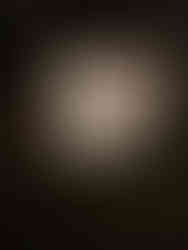















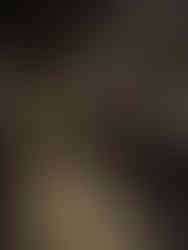








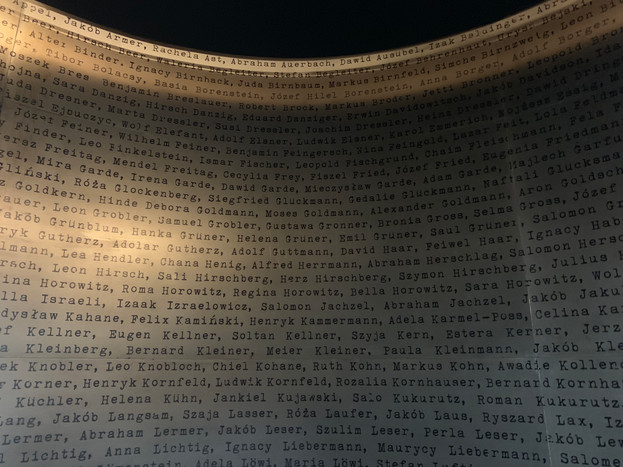
















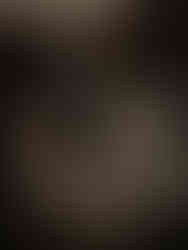
























































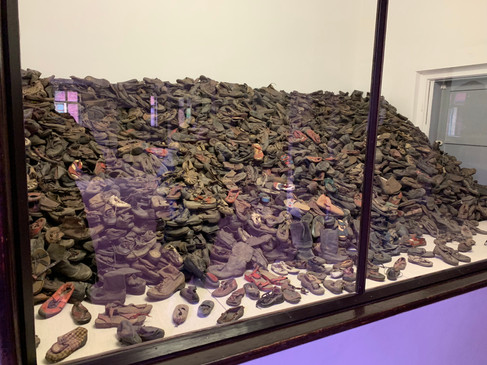














































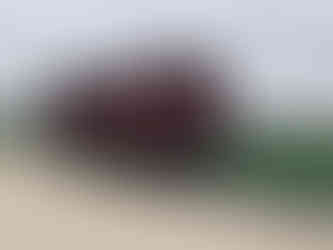












Comments